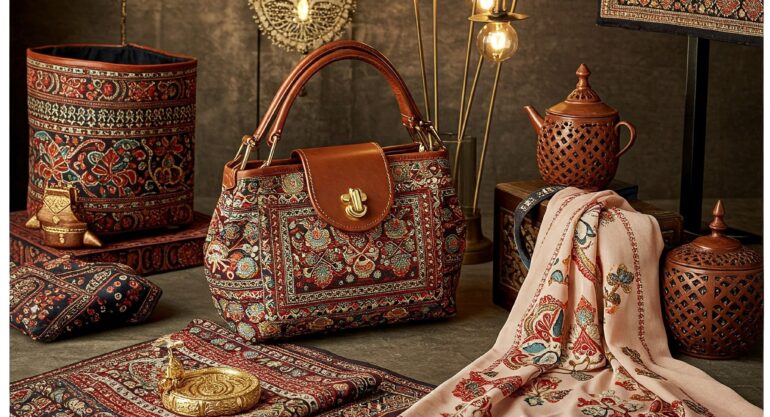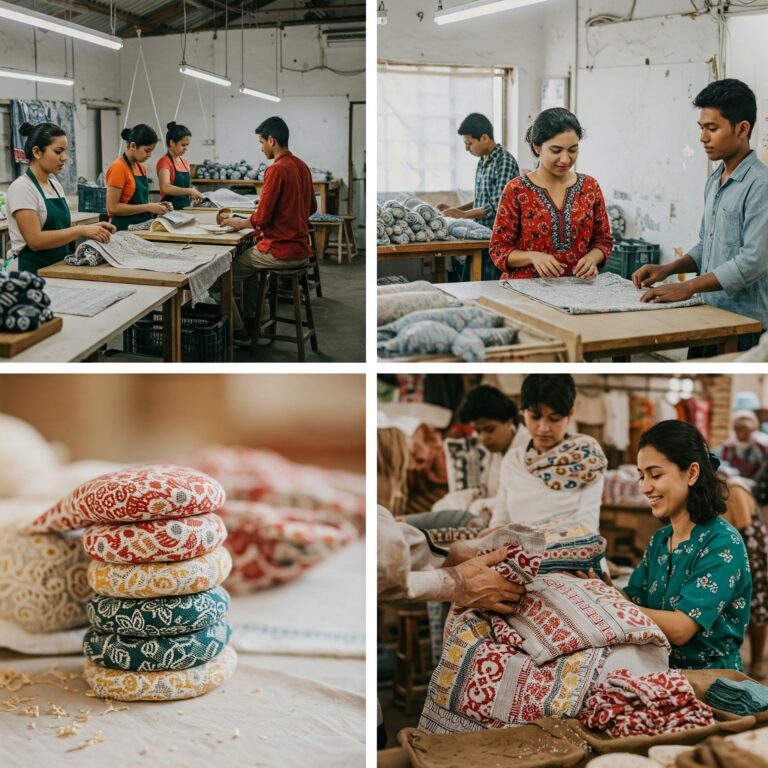
- /
- By smallworldindia
India’s handicraft sector has always been a treasure trove of culture, craftsmanship, and creativity. From intricate embroidery in Kashmir to delicate pottery in Rajasthan and wood carvings in Karnataka, the diversity and depth of Indian art forms are unmatched. But what’s catching global attention lately isn’t just the beauty—it’s the story behind every handmade piece. And luxury brands around the world are taking notice.
The Global Shift Toward Authenticity

Today’s consumers are evolving. They’re not just buying products—they’re buying stories, heritage, and sustainable value. As mass-produced goods saturate markets, authenticity is becoming the new luxury. Indian handicrafts, with centuries-old traditions passed down through generations, embody this authenticity.
Global brands like Hermès, Louis Vuitton, and Gucci have begun collaborating with or sourcing from Indian artisans to bring a touch of handmade elegance to their collections. What once was a niche admiration has become a mainstream movement.
Why India? A Blend of Skill and Soul

India boasts over 7 million artisans, many working in rural and semi-urban areas. Each region has its unique art form—Madhubani paintings from Bihar, Chikankari embroidery from Lucknow, or Bidriware from Karnataka. These are not just crafts—they’re cultural narratives woven into every product.
Luxury brands are drawn to this depth. The level of skill, intricate detailing, and sheer time invested in each piece aligns perfectly with the ethos of luxury: exclusivity and excellence.
Sustainable and Ethical Sourcing

In an era where sustainability is a priority, handmade Indian crafts offer a greener alternative to factory-made products. They use locally sourced materials, minimal machinery, and age-old eco-friendly techniques. Brands keen on reducing their carbon footprint see Indian artisans not just as suppliers, but as partners in building a sustainable future.
Moreover, ethical sourcing and fair-trade practices are becoming non-negotiable in the luxury space. By empowering Indian artisans with fair wages and international exposure, brands can enhance their CSR narratives while creating genuine impact.
Notable Collaborations and Initiatives
Several Indian labels have already made global waves. Designers like Sabyasachi Mukherjee, Rahul Mishra, and Anita Dongre have showcased Indian craftsmanship at international fashion weeks and partnered with global platforms. Their success stories are inspiring a new wave of luxury-artisan fusion.
- Sabyasachi’s collaboration with H&M made headlines by blending traditional Indian aesthetics with global fashion.
- Christian Louboutin’s partnership with Indian artisans led to limited-edition shoes that featured zardozi and hand embroidery.
- Organizations like AIACA (All India Artisans and Craftworkers Welfare Association) are also working to bridge the gap between artisans and international markets.
The Road Ahead
While the future looks bright, there are challenges. Artisans often lack access to global marketing, quality standardization, and digital literacy. However, with increasing government initiatives like “Make in India”, support from NGOs, and investment by luxury brands, the sector is slowly getting the visibility it deserves.
Digital platforms are playing a pivotal role too. E-commerce sites like Okhai, Jaypore, and are bringing local talent to global audiences.
India’s handicraft sector is no longer just a cultural gem—it’s becoming a luxury powerhouse. As global consumers seek deeper connections, richer stories, and sustainable elegance, Indian artisans are stepping into the spotlight.
The convergence of heritage and haute couture has only just begun. For luxury brands looking to stand out in a saturated market, the soul of India might just be their next signature.

